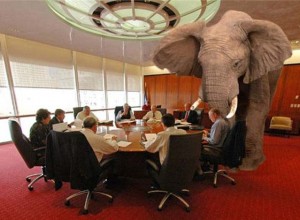 At the recent Oregon South Coast Resilience Forum (sponsored by The Ford Family Foundation) in Coos Bay I had the honor of being the keynote presenter to talk about lessons on resilience from the 2011 Japan earthquake and tsunami. Oregon’s coastal communities will someday be slammed for a similar two pronged disaster: a M9 earthquake with minutes of strong shaking and almost total obliteration from the ensuing tsunami. I don’t believe we are talking enough about this future event and how we have inherited communities built long before we understood the true nature of the northwest. Subduction zone earthquakes are the basis for the rugged and dynamic beauty of the rugged coastlines and snow capped mountains (volcanoes) of the Cascades.
At the recent Oregon South Coast Resilience Forum (sponsored by The Ford Family Foundation) in Coos Bay I had the honor of being the keynote presenter to talk about lessons on resilience from the 2011 Japan earthquake and tsunami. Oregon’s coastal communities will someday be slammed for a similar two pronged disaster: a M9 earthquake with minutes of strong shaking and almost total obliteration from the ensuing tsunami. I don’t believe we are talking enough about this future event and how we have inherited communities built long before we understood the true nature of the northwest. Subduction zone earthquakes are the basis for the rugged and dynamic beauty of the rugged coastlines and snow capped mountains (volcanoes) of the Cascades.
My presentation on this subject dramatize this point by calling out the elephant in the room, the Cascadia M9 Earthquake and Tsunami. This effective image was used when addressing the Oregon Legislature during the recent 2013 session and continues to be used at other community meetings. We cannot allow this conversation or the elephant in the room to simply go away. Rather, it should be the basis for serious conversations around the tables of elected officials, business stakeholders, community leaders, and dinner tables.
It has been two and a half years since the March 2011 Japan earthquake and tsunami occurred and most of the current US media attention to this event is relegated to tsunami debris and lingering worries about the nuclear reactor problems. While these are significant in their own right, Oregonians may have lost sight of how this catastrophe was and is the best opportunity to leverage a distant disaster to address their own vulnerability to a similar event, but with much worse consequences.
The Cascadia subduction zone has generated at least 19 similar or larger earthquake/tsunami combos in the Pacific Northwest in the past 10,000 years with an average recurrence period of 500 years, but with intervals ranging from around 200 to 1,000 years. This inevitability is the driver for the development of the Oregon Resilience Plan (ORP), which takes a 50-year approach to reducing the impacts from this disaster. The ORP was delivered to the Oregon Legislature in 2013 and now has a Governor’s Task Force preparing an implementation plan for the 2015 Legislative Assembly.
But even with all of this high level government attention, this catastrophic event is absent from nearly all long-term plans and strategies dealing with community sustainability, economic growth, and regional planning. For example, sustainability and climate change get a great deal of media and political attention primarily around natural resource conservation and weather related impacts. But these issues are global and diffused in their long-term impacts.
My issue is we need to reach out and make the connection between sustainability – reducing human’s impact to Mother Nature– and disaster resilience, which aims to reduce Mother Nature’s impact to humans. There is a great deal of overlap in goals and objectives between the two. For the Pacific northwest, I argue that we should see that a Cascadia M9 event is a much more tangible, localized, well defined and salient driver for this redirection. Super storm Sandy will pale to the vast expanses of debris fields and broken infrastructure across hundreds of coastlines and inland counties.
We need to use this wakeup call from Japan to help us reduce risk and plan now for recovery. Waiting to fix what is broken will set Oregon back at least ten years. Let us strive now for our generation and the next to avoid the option of having to learn these lessons the hard way.
 About the Author: Jay Wilson, Hazard Mitigation Coordinator for Clackamas County Emergency Management and Chair, Oregon Seismic Safety Policy Advisory Commission (OSSPAC). Jay’s duties include managing hazard mitigation projects and planning, public education, and coordinating damage assessments following disasters.
About the Author: Jay Wilson, Hazard Mitigation Coordinator for Clackamas County Emergency Management and Chair, Oregon Seismic Safety Policy Advisory Commission (OSSPAC). Jay’s duties include managing hazard mitigation projects and planning, public education, and coordinating damage assessments following disasters.
